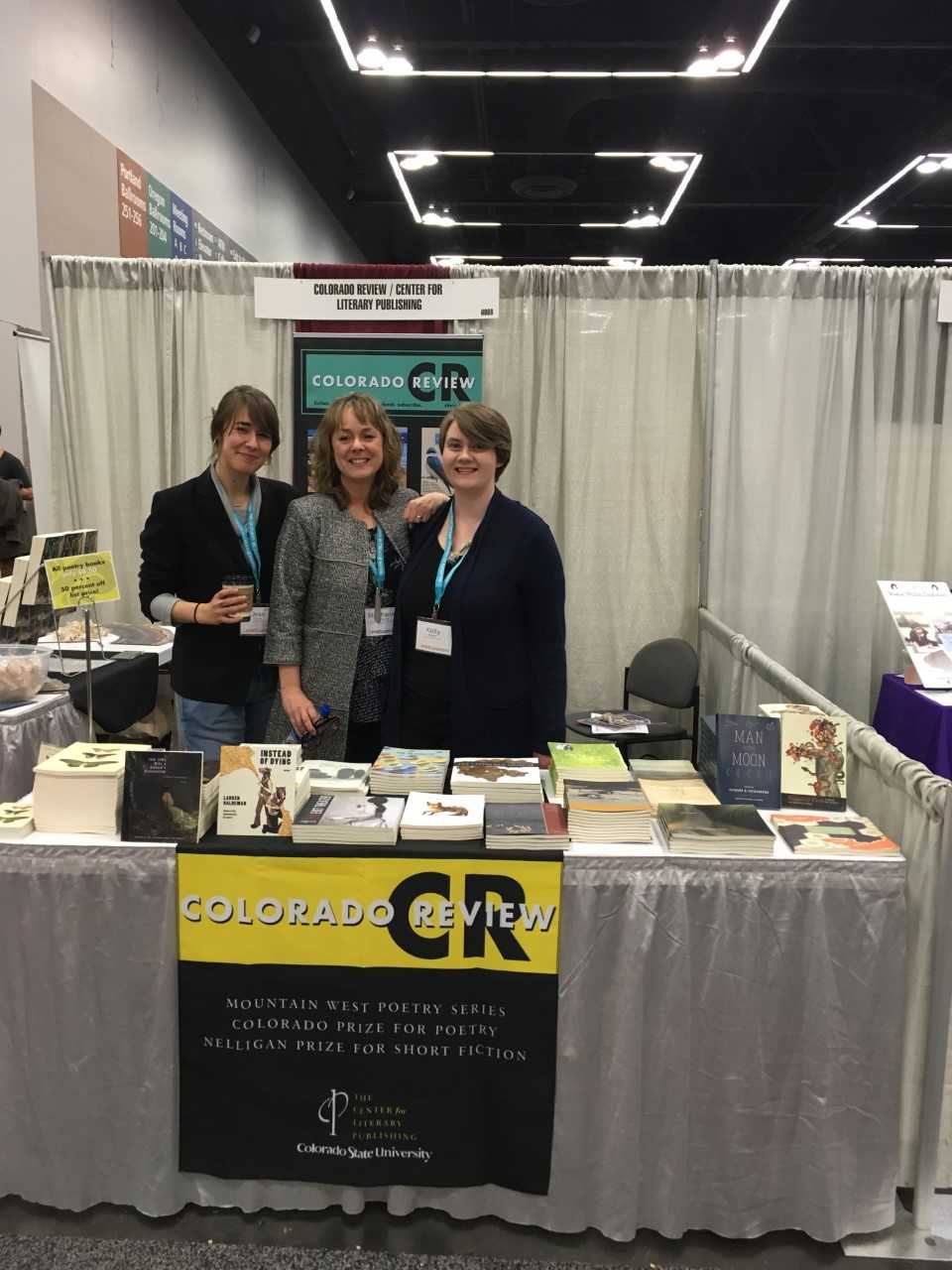By Colorado Review Editorial Assistant Kelly Weber
It’s April, which means it’s National Poetry Month, and it also means Portland was beginning to bud and bloom as writers from all across the country descended upon the city this past week for AWP 2019. The smell of coffee and blossoms mixed as people sporting canvas conference bags chatted about poetry at crosswalks and in front of the Oregon Convention Center. This was my second time attending AWP, and this year I had the privilege of helping to work the booth for the Colorado Review, in addition to attending some great panels and readings.
One of the best parts of AWP is getting to meet presses in person, to put faces to the names we see listed under staff categories on press websites, and to put faces to the names of contributors and readers. Whether introducing someone to the press for the first time or welcoming back familiar names, we at the Center for Literary Publishing love being able to meet people in person at the Colorado Review booth. This, I think, is the reason all of us at the presses do the work: connecting writing and readers is the best part of our job (as writers and editors) at the end of the day. I know I found working the booth this past week to be one of the highlights of my experience working with the CLP.
In between other events, I also had the opportunity to attend a panel called “Chronic Illness and the Writer.” As someone who writes about chronic illness, I’m always trying to consider new ways of thinking about the body. The four writers on the panel—Nafissa Thompson-Spires, Emma Smith-Stevens, Lorraine Berry, and Ilana Masad—all read work that detailed the visceral reality of living with chronic illnesses. “My body has failed me again,” states the narrator of Nafissa Thompson-Spires’ short fiction piece “The Body’s Defenses Against Itself,” a heartbreaking line in a beautiful piece she excerpted at the panel. This line seemed to encapsulate the recurring theme of all four writers’ work: the chronic body is both familiar and strange, something that “cannot be persuaded,” in the words of Emma Smith-Stevens in an essay forthcoming in the book Against Death: 35 Essays on Living from Anvil Press. All of the writers present grappled with the ways they mourn their bodies, particularly as their symptoms change and extend the mourning process. This particularly struck home for me, as a writer who has struggled with such mourning. I was also particularly impacted by Ilana Masad’s discussion of how difficult it is to describe pain from inside the pain—to render visible what cannot be visible. This is something authors need to think about as they write and publish on this subject.
The panel also discussed the problematic narratives and representation that surround chronic illness. As Lorraine Berry said in her essay “Nietzche and Kanye Don’t Know Shit About My Migraine Pain,” “Our desire to make meaning of pain does not ameliorate the pain.” She went on to discuss the ways that women’s pain, in particular, is not believed by doctors. Citing Leslie Jamison’s seminal essay “Grand Unified Theory of Female Pain,” all of the authors talked about the ways women’s pain is treated differently from men’s pain. They pointed out that men have often depicted women as attractive in their sickliness (abstract, an aura of illness somehow connected to feminine essence) but not sickness (grounded and owned in the body). As Thompson-Spires noted, living in a female body can be full of vulnerability and fear, and, furthermore, “There is no space in which [black women’s] pain is idealized or real.” The experience of chronic illness, and the representation of chronic illness—who is depicted and how—is of course always shaped by power structures of race, class, gender, and sexuality.
All of the authors on the panel noted that writing offers, if not catharsis or absolution, at least some kind of articulation of what is happening in the body and connection to a wider community. For many, the writing is a kind of coping, outlet, or creative distraction from the pain. They also stressed that it’s important to write what you can and when you can. Some pieces, they emphasized, may also be intended for a small community or a publication with a small circulation—and that’s okay.
If there’s one thing I learned from this panel, and generally from AWP, it’s that finding the right community for a piece of writing is key. A writing piece can do all kinds of important work in the world, no matter the size of its audience. And, in the end, as big and overwhelming as the writing world and a conference like AWP can seem, our community is still relatively small. I kept thinking about this as I boarded a plane Sunday morning full of other writers, watching the sun light the snow on the mountains outside of Portland. This is why we must write the best work we can and strive to be good literary citizens and community members to one another as we read, write, submit, and edit. We owe it to the work. We owe it to each other.
